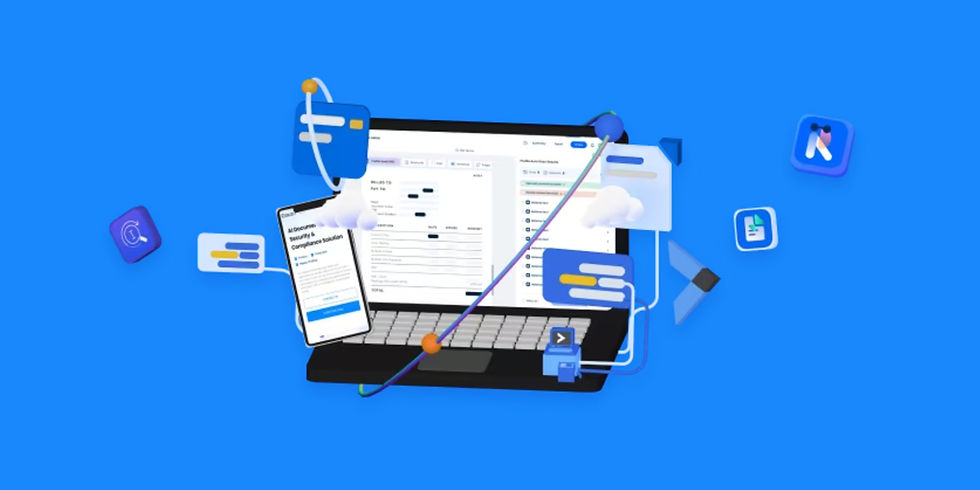Protect Sensitive Data at Scale with an AI Powered Privacy API
- idoxai9
- Aug 1
- 3 min read
In the age of digital transformation and large language models, ensuring data privacy is essential. With evolving regulations like GDPR, HIPAA, and CCPA, businesses must protect personal and confidential data at every stage of their document workflows.
An AI powered privacy API helps automate the process of identifying and securing sensitive content before it enters downstream systems, analytics platforms, or machine learning models. This guide explores how such an API can streamline data protection efforts across industries.
The Challenge: Manual Privacy Processes Don’t Scale
Organizations handle thousands of documents daily—legal contracts, financial statements, scanned forms, healthcare records. Redacting these manually is time-consuming and error-prone, especially when managing high volumes or operating in regulated sectors.
Manual redaction also introduces inconsistencies, making it harder to demonstrate compliance or reduce legal exposure. As AI tools become embedded into business workflows, the risk of exposing personal data—intentionally or accidentally—continues to grow.

The Solution: AI Powered Privacy API
An AI powered privacy API automates document redaction and data sanitization at scale. It integrates into existing systems, scans documents for personal or regulated content, and removes or masks sensitive information automatically—ensuring compliance and efficiency.
Built on advanced machine learning, these APIs identify personally identifiable information (PII), protected health information (PHI), and other sensitive terms without needing templates or manual rules. This enables accurate protection across a wide range of document types and formats.
Core Features
Smart Entity Detection
Automatically identifies names, addresses, phone numbers, email addresses, national IDs, financial data, health records, and more—across structured and unstructured documents.
Multi-Format Support
Processes over 40 document types, including PDFs, Word, Excel, images, HTML, and JSON, without requiring manual conversion.
Redaction Modes
Choose from:
Full redaction (blackout)
Placeholder redaction (tagging)
Masking (e.g., partial data obfuscation)
These modes help match compliance needs or internal access policies.
Policy-Based Redaction
Configure redaction rules based on document type, user role, or business unit. For example, a finance team may view unredacted documents, while support teams see masked versions.
Scalable API Integration
The API is designed with RESTful architecture, SDKs for major languages, and asynchronous processing options for large batch jobs. Developers can integrate quickly without rebuilding internal systems.
Benefits for Security and Compliance
Encryption for data in transit and at rest
No data retention—files are automatically deleted after processing
Logging and audit capabilities for governance teams
Compliance-ready for frameworks like GDPR, HIPAA, CCPA, and ISO
This ensures organizations are protected not only legally but also reputationally, with a lower risk of leaks or misuse.
Use Cases by Industry
Industry | Application Example |
Healthcare | Remove PHI from medical records shared with vendors or researchers |
Finance | Sanitize transaction data for reporting or compliance documentation |
Legal | Automatically redact client data from court filings or internal reviews |
Government | Fulfill freedom-of-information or public access requests without risking exposure |
Education | Anonymize student information in research or audit scenarios |
Customer Support | Strip PII from tickets or logs before AI analysis |
Example Workflow
A software company developing an AI-powered assistant for customer service needs to ingest past chat data for training. To ensure no customer data is exposed to the model, the team integrates the privacy API into the pre-processing step. It scans each document or log file, redacts sensitive data, and passes a sanitized version to the AI system. This protects customer privacy and ensures regulatory compliance.
Integration Overview
Sign up and generate API credentials
Upload documents or send data to the API
Receive sanitized output files via API or webhook
Confirm deletion and processing status through logs
Continue workflow with redacted files
Most APIs also include sandbox environments for testing, CLI tools for automation, and analytics dashboards to monitor usage and results.
Why an API-Driven Approach Wins
Traditional redaction tools are often desktop-based or manual. They can’t handle scale, don’t integrate easily with digital workflows, and require human input. An API-based solution:
Works across cloud and hybrid systems
Supports real-time and batch redaction
Reduces operational costs by minimizing manual labor
Scales up as data volume grows
For organizations using AI, analytics, or customer data pipelines, the automation and accuracy of an API-based approach is essential.
Conclusion
An AI powered privacy API offers businesses a faster, more accurate, and compliant way to secure sensitive data across digital workflows. It removes the risk of accidental exposure while freeing teams from slow, manual tasks. With flexible integration, advanced detection capabilities, and enterprise-grade security, this solution supports both innovation and trust.
Check:— idox ai review
Comments